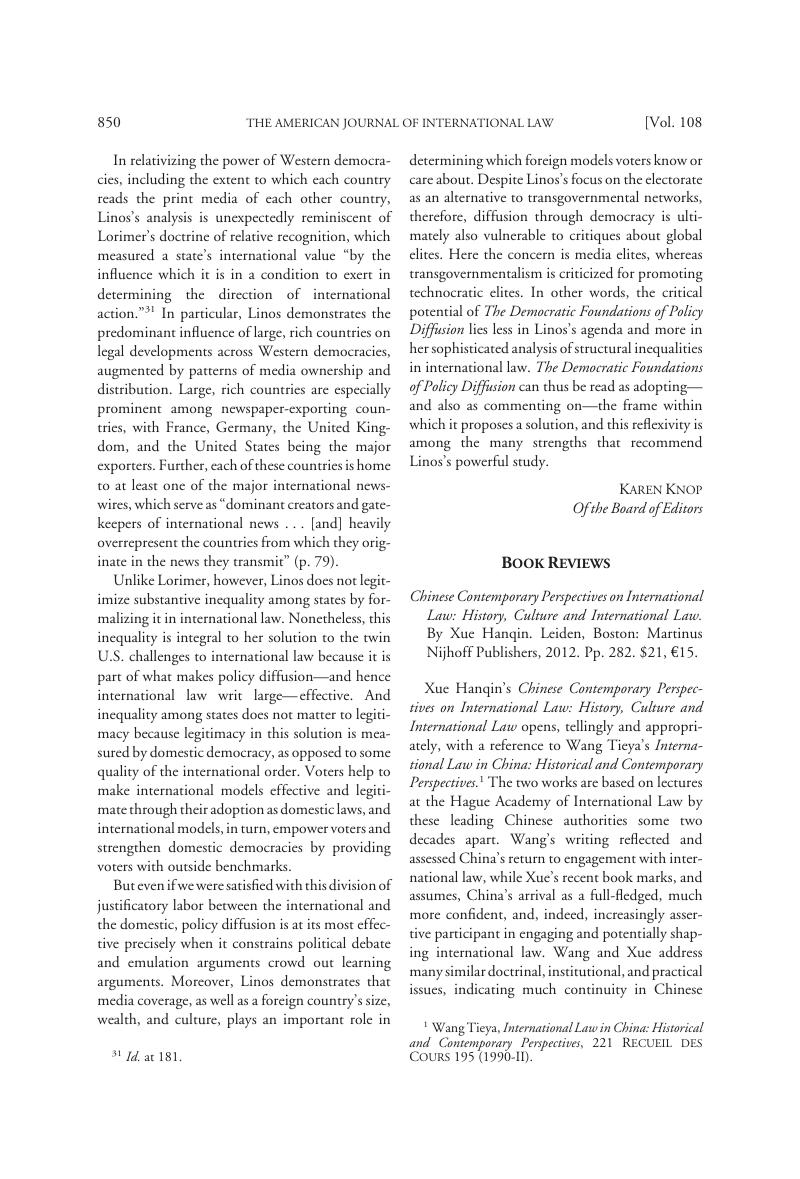No CrossRef data available.
Published online by Cambridge University Press: 20 January 2017

1 Tieya, Wang, International Law in China: Historical and Contemporary Perspectives, 221 Recueil Des Cours 195 (1990-II)Google Scholar.
2 The Five Principles of Peaceful Coexistence are mutual respect for sovereignty and territorial integrity, mutual nonaggression, noninterference in each other’s internal affairs, equality and mutual benefit, and peaceful coexistence. The doctrine was formally articulated in the Agreement Between the People’s Republic of China and the Republic of India on Trade and Intercourse Between Tibet Region of China and India, Apr. 29, 1954, 299 UNTS 57.
3 Wang, supra note 1, at 355–56.
4 deLisle, Jacques, Troubled Waters: China’s Claims and the South China Sea, 56 Orbis 608 (2012)CrossRefGoogle Scholar.
5 The Bandung Line is named after the 1955 meeting in Bandung, Indonesia, of nonaligned African and Asian countries.